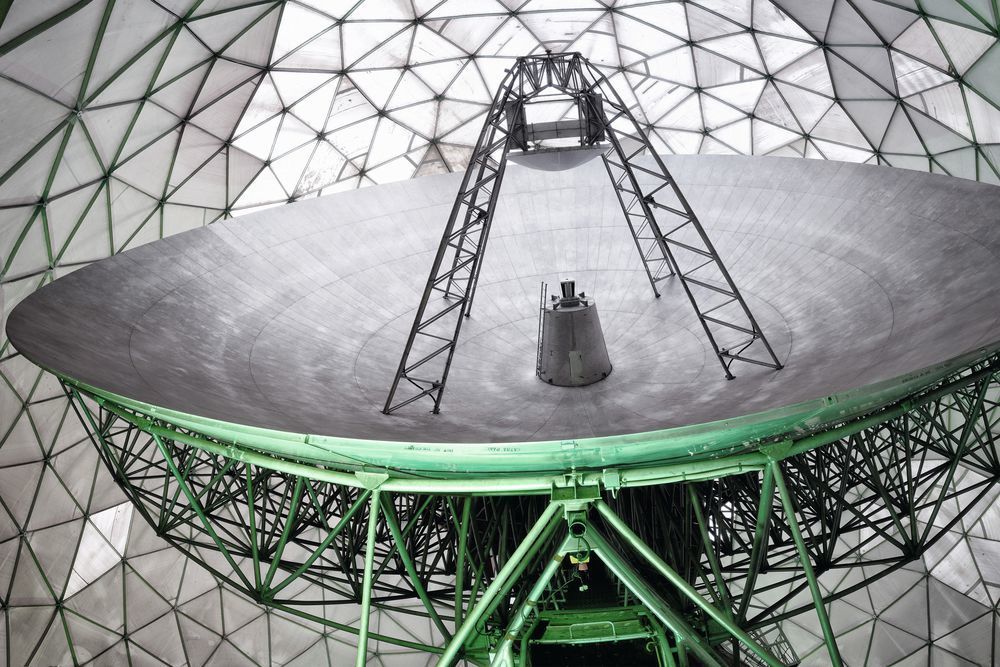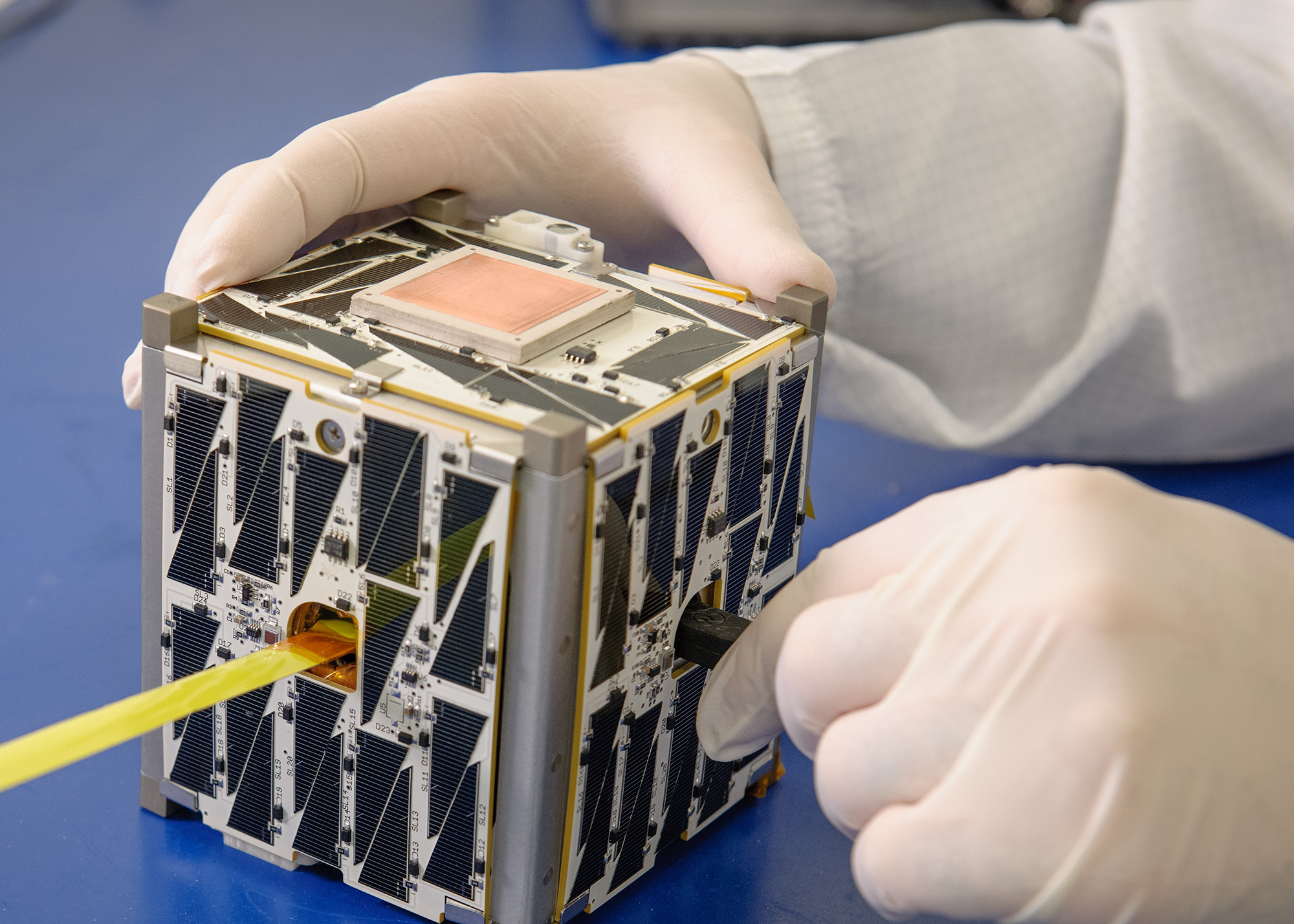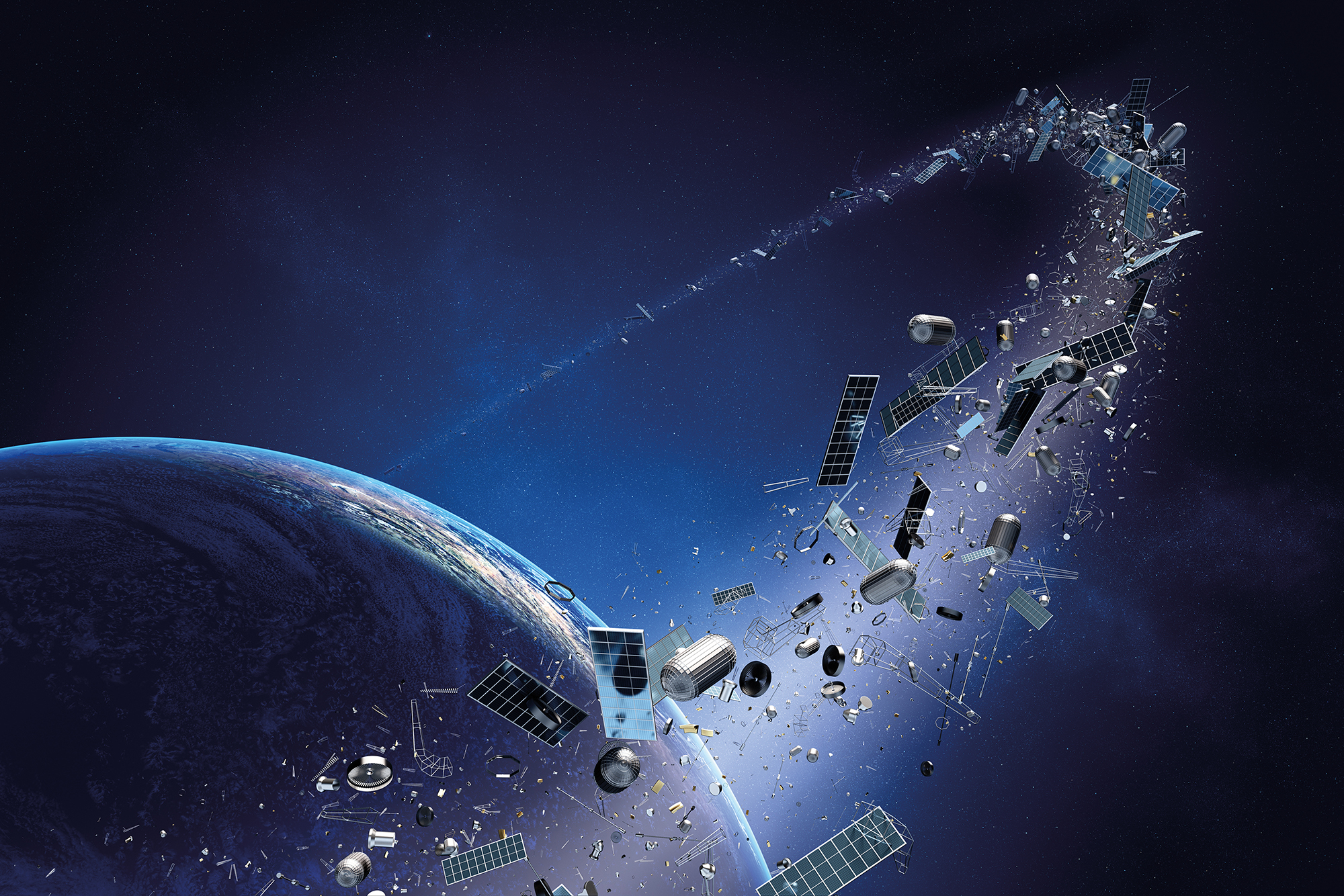Future TIRA – space observation radar of the future
The situation in low-Earth space is changing dramatically: It is becoming fuller all the time and the satellites buzzing around are getting smaller and smaller. Space observation radars must keep pace with these developments, by meeting requirements such as higher resolutions and high sensitivity. Fraunhofer FHR's TIRA space observation radar provides an excellent basis for this and it is currently being prepared to fulfill future requirements.



The area where most people would assume there is only empty space is becoming increasingly full. Driven by globalization, digitalization, low-cost technologies and constant miniaturization, countless satellites, both active and decommissioned, as well as an ever-increasing amount of space debris, are buzzing around in low-Earth space. In the past, the number of Earth satellites increased linearly, but now it is rising almost exponentially. While in the past only space agencies such as ESA and NASA launched satellites into space, Google and other companies are now increasingly entering the satellite business. Another development is that satellites are becoming smaller and smaller, and their attachments ever more compact. After all, small satellites are much cheaper and development times are shorter, making them easier to replace in the event of a failure. The smallest of these are the "cubesats," featuring the smallest possible unit measures of just 11.35 x 10 x 10 centimeters. The following figure shows the scale of their footprint in space: In 2017, 18,000 cubesat launches were registered for the subsequent five-year period. With such a flurry of activity in LEO – the low-Earth orbit located between 200 and about 2,000 kilometers above the Earth's surface – orderly, safe satellite operations are becoming increasingly difficult. As a result, many satellite operators are already moving to higher altitudes. However, the further the satellites are from radar, the more difficult they are to detect and image.
For high-value satellites in particular, various demands, including for mission support, are set to increase significantly in the coming years. Is some part of the satellites damaged? And if so, which? With current systems, such questions will become increasingly difficult to answer in the future.
Requirements for space observation systems
As far as the choice of space observation systems for the future is concerned, radar is ideal. This is because it offers several advantages over optical systems: Optical systems only deliver results under cloudless skies and additionally depend on the satellites, but not the sensor, being illuminated by the sun. In contrast, active radar systems work equally efficiently even under cloudy skies, in fog and haze, and day and night. However, the demands on resolution are now enormous. After all, even small satellites need to be recognizable on radar images, and not only as dots; in the future, it will also be possible to recognize details such as attachments or damage. However, this requires at least ten resolution cells per object per spatial dimension. This means that for a satellite measuring 5 x 5 x 5 meters, the resolution would have to be at least 50 centimeters.
TIRA is the only system in Europe to meet the basic requirements
The TIRA system already meets many of the basic requirements that a space observation system of the future needs. For example, it has two radar systems: A high-precision target-tracking radar that can track objects in space and an imaging radar that produces high-resolution images supported by the target-tracking radar. A key core component of TIRA is its 34 m antenna, which ensures high sensitivity. This enables a lot of energy to be radiated into space towards an object in a targeted manner and as much as possible of the energy scattered back from that object to be recovered – the basic requirement for high sensitivity. All the necessary infrastructure is also in place, including high-precision mechanics that enable the radar antenna to precisely track the space objects passing by in the sky. Furthermore, the antenna is particularly agile, which enables the tracking of space objects even when passing close to the zenith.
In short, TIRA is the only system in Europe that fulfills these basic requirements and that can therefore be expanded to form the space reconnaissance sensor of the future with relatively manageable effort. Fraunhofer FHR will meet this challenge in the coming years in order to significantly increase the information content of future TIRA radar images, thereby also enabling sufficiently good-quality imaging of small and distant space objects.